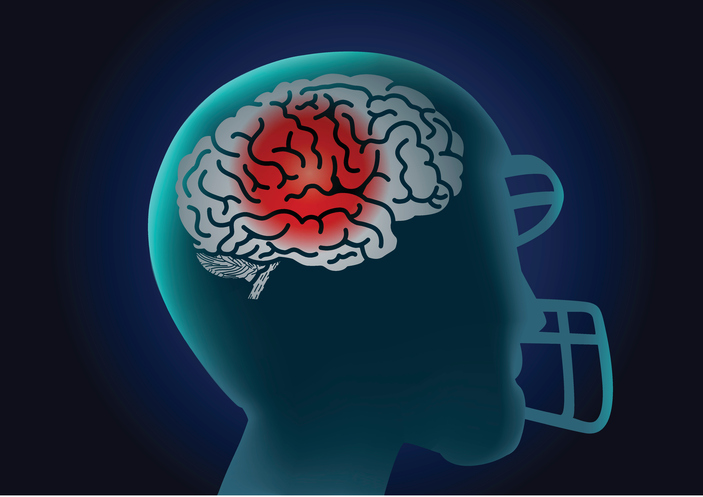
For the last several years, more than 100 million people have tuned in to watch the Super Bowl, one of the most popular (and profitable) sporting events in the world. In a recent Sports Illustrated poll, 26.7 percent of respondents (random fans from 30 states across the U.S.) said football was more important than religion; 20.1 percent said it was more important than family.
This 2016 poll is one of the largest and most comprehensive surveys every conducted by the sports publication, and it aimed to uncover the feelings football fans have about the sport’s most controversial topics.
Two findings in particular highlight the dichotomy people face with regards football: first, 94 percent of respondents said traumatic brain injuries are a serious problem in the NFL; and second, 77 percent said they would still allow their child to play contact football.
Nebraska Concussion Awareness Act
In 2012, the Nebraska Legislature enacted the Nebraska Concussion Awareness Act, which brought awareness to the inordinate number of children and adolescents who suffer brain and spinal cord injuries as a result of playing contact sports like football, soccer, and hockey.
In particular, the Legislature made reference to second-impact syndrome, or SIS for short. SIS occurs when a player sustains a concussion (mild or severe) and returns to play before the injury has fully healed. The second impact (mild or severe) can cause rapid brain swelling and bleeding that can result in death or permanent disability within minutes of the second impact.
This rare but potentially fatal condition is especially dangerous among youth players because young brains aren’t fully developed. This also means that primary impacts and concussions take longer to heal.
The Nebraska Concussion Awareness Act has three primary components:
- More Education – Coaches, parents, and teachers must be provided training materials that detail symptoms and risk factors.
- Removal Policies – Coaches or trainers who “reasonably suspect” a player sustained a concussion must remove the player from play until the player receives written clearance from a licensed health care professional.
- Official Clearances – Before a player can return to play he/she must obtain written clearance from a licensed health care professional, as well as written clearance from his/her parents.
These new regulations are a step in the right direction, but fall short in real life application. Just last year, the Omaha World-Herald reported a high-school senior from Randolph, Nebraska, was helicoptered to a hospital where he was treated for a subdural hematoma following a screen pass and tackle during a Friday night football game.
Even with rules and regulations in place—even when coaches understand the signs and symptoms and parents know the risks—there’s no way to guarantee the safety of players (especially young players) on the football field.
Ignoring the Truth: It’s a Spectator Sport
There are a few problems that make safety on the football field challenging for everyone but especially the players.
According to a report by the Institute of Medicine and the National Research Council, “There is still a culture among athletes that resists both the self-reporting of concussions and compliance with appropriate concussion management plans.”
The idea that players should “man up” following an injury puts pressure on players to ignore symptoms and keep coaches and trainers in the dark. This becomes even more likely when players are competing for college scholarships and other incentives.
Getting a scholarship or “going pro” should definitely give players pause. Researchers with the Department of Veterans Affairs and Boston University found chronic traumatic encephalopathy (CTE), or brain deterioration caused by repeated head trauma, in 96 percent of the NFL players they examined and in 79 percent of football players at various levels of play.
If football remains a tough-guy sport where players are doomed to suffer injury at every level of play, how long will it be before we run out of players? In the meantime, what sacrifices do football fans expect from players? A few concussions … their lives?
Another challenge: There is currently no official oversight on concussions and traumatic brain injuries for middle, high school, and collegiate sports. There’s also no standard for medical availability during competitions and practices.
For example, many schools have certified athletic trainers, and for competitions they bring emergency medical services onsite. However, nationally, 30 percent of public high schools do not have access to an athletic trainer, and 50 percent do not have athletic trainers present at practices.
Moving Forward in Nebraska
Brain injuries in football are considered rare among youth athletes. Between 2005 and 2014, a total of 24 high school and four college football-related traumatic brain and spinal cord injury fatalities were recorded; about 3 deaths per year.
And despite what we know about traumatic brain injuries and the long-term effects, many people turn a blind eye to the facts: Contact sports, while not usually fatal, put players at a higher risk of brain injury or spinal cord injury compared to other sports and youth activities.
And despite overwhelming evidence to the contrary, organizations like the NFL and NCAA regularly dodge allegations linking football to brain injuries. Without adequate oversight and acceptance from the organizations that have propelled football into American consciousness, it’s doubtful any meaningful change with come.
For people living in Nebraska, it’s up to parents, teachers, and students, as well as football fans, to take a step back and understand that players aren’t gladiators, and their lives shouldn’t be compromised for entertainment or academic gain.
Coaches and parents should always follow the guidelines for the Management of Sport-Related Concussion and practice “reasonable suspicion” when assessing a player’s injuries on and off the field. Moreover, parents and coaches should push for more medical access during games and practices alike.
Finally, parents must hold coaches and trainers accountable for the decisions they make when a player goes down. What good is the Nebraska Concussion Awareness Act if coaches and trainers ignore or can’t detect signs and symptoms?
If you or someone you know was injured playing football and they did not receive proper instruction, care, or clearance, our Omaha brain injury lawyers want to hear from you.
At Hauptman, O’Brien, Wolf & Lathrop, P.C. we help victims and their families find their footing after a catastrophic brain injury. Don’t wait to call! When it comes to brain injuries, every second counts. Call us at (402) 218-1321 for a free case evaluation, or fill out this form and let us know what happened.
Follow us on Twitter and like our page on Facebook for up-to-date information on Nebraska brain injuries and more.



What a great service, thank you so much for the free ride. I appreciate it so much!